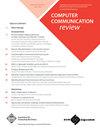Atypical Teratoid/Rhabdoid Tumor in Adults an Uncommon Entity: A Case Report
IF 2.8
4区 计算机科学
Q3 COMPUTER SCIENCE, INFORMATION SYSTEMS
引用次数: 1
Abstract
Atypical teratoid/rhabdoid (AT/RT) tumor is a rare, highly malignant tumor of the central nervous system (CNS), most commonly found in children less than 5 years of age. Although the vast majority of cases are diagnosed in young children, there have been isolated case reports in adults. Since its histological appearance can be confused with other tumors, especially in adults, separating AT/RT from other neoplasms may be difficult. In many instances, a reliable diagnosis is not possible without demonstrating the lack of nuclear INI1 (SMARCB1) or BRG1 (SMARCA4) protein expression by immunohistochemical methods or by detection of somatic / germline mutation of the INI1 (SMARCB1) or BRG1 (SMARCA4) gene. Final diagnosis is confirmed after immunohistochemical analysis and/or molecular analysis. Immunohistochemical staining show that the tumor cells are positive for vimentin and reacted variably for keratin, epithelial membrane antigen (EMA), synaptophysin, neurofilament protein, CD34, and smooth muscle actin (SMA) and negative for GFAP, S-100, desmin and CD99. In adult examples of AT/RT, the diagnosis requires a high index of suspicion, with early tissue diagnosis and a low threshold for investigation with INI1 immunohistochemistry to differentiate this entity from other morphologically similar tumors. Although Abstract成人不典型畸胎瘤/横纹肌样肿瘤一例报告
非典型畸胎体/横纹肌样(AT/RT)肿瘤是一种罕见的中枢神经系统高度恶性肿瘤,最常见于5岁以下儿童。虽然绝大多数病例是在幼儿中诊断出来的,但在成人中也有孤立的病例报告。由于其组织学表现可能与其他肿瘤混淆,特别是在成人中,因此很难将AT/RT与其他肿瘤区分开来。在许多情况下,如果不通过免疫组织化学方法或检测INI1 (SMARCB1)或BRG1 (SMARCA4)基因的体细胞/种系突变来证明核INI1 (SMARCB1)或BRG1 (SMARCA4)蛋白表达缺乏,则不可能进行可靠的诊断。最终诊断需要经过免疫组织化学分析和/或分子分析。免疫组化染色显示肿瘤细胞波形蛋白呈阳性,角蛋白、上皮膜抗原(EMA)、突触素、神经丝蛋白、CD34、平滑肌肌动蛋白(SMA)呈阳性,GFAP、S-100、desmin、CD99呈阴性。在成人AT/RT病例中,诊断需要高怀疑指数,早期组织诊断和INI1免疫组织化学调查的低阈值,以区分该实体与其他形态相似的肿瘤。虽然抽象
本文章由计算机程序翻译,如有差异,请以英文原文为准。
求助全文
约1分钟内获得全文
求助全文
来源期刊

ACM Sigcomm Computer Communication Review
工程技术-计算机:信息系统
CiteScore
6.90
自引率
3.60%
发文量
20
审稿时长
4-8 weeks
期刊介绍:
Computer Communication Review (CCR) is an online publication of the ACM Special Interest Group on Data Communication (SIGCOMM) and publishes articles on topics within the SIG''s field of interest. Technical papers accepted to CCR typically report on practical advances or the practical applications of theoretical advances. CCR serves as a forum for interesting and novel ideas at an early stage in their development. The focus is on timely dissemination of new ideas that may help trigger additional investigations. While the innovation and timeliness are the major criteria for its acceptance, technical robustness and readability will also be considered in the review process. We particularly encourage papers with early evaluation or feasibility studies.
 求助内容:
求助内容: 应助结果提醒方式:
应助结果提醒方式:


